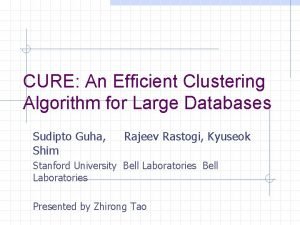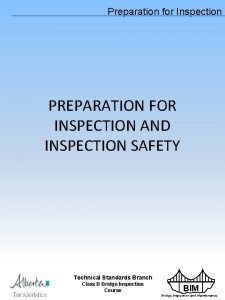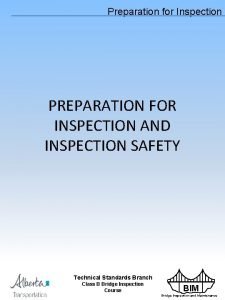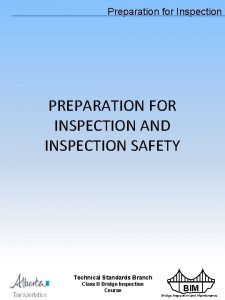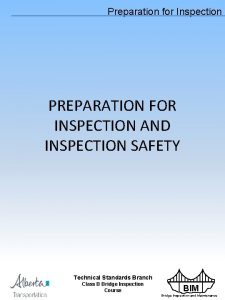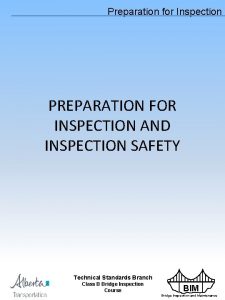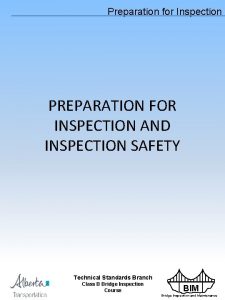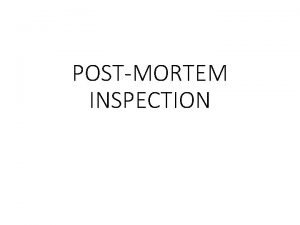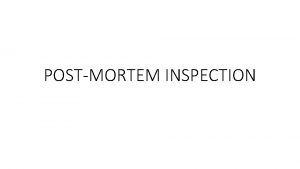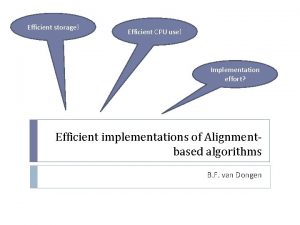Multilayered inspection technologies for secure and efficient large













- Slides: 13

Multi-layered inspection technologies for secure and efficient large volume freight supply chains Acronym: MANTELS* i f on z n de c e l ia *Unipd partecipa ad un 2014 -06 -30 H 2020 -BES 09 consorzio alternativo: 1 INNERSCAN (irlandese)

Project Proposal within the Horizon 2020 -BES-9 -2014 call on Supply Chain Security Topic 2: Technologies for inspections of large volume freight, Research and Innovation Action, Submission Deadline 28 August 2014 Challenge: Intermodal shipping container security associated with terrorist threats, illegal immigration, theft and smuggling is an important factor in overall EU border security. The greatest volume and risk of illegal/illicit/mis-declared goods into the EU, of interest to Customs, include, but are not limited to: illicit narcotics (heroin, cocaine, etc. ) explosives, tobacco products, chemicals and humans. Intelligence together with scanning is useful in narrowing the range of suspicious consignments, but ultimately a physical examination of the load is required. This is resource intensive and adds cost and delay to importers. Customs currently often employ X-ray interrogation supported by risk-selection. Scope and aim: Aim of the project is to select the most effective (array of) technologies for screening large volume freight. The best results are expected to be achieved where (at least) two independent technologies are employed in conjunction. Therefore, options for parallel development of different technologies for container scanning up to TRL 7 should be explored, i. e. : 1) Atomic property based interrogation (2 -D-X-ray, 3 -D-X-ray, muon, neutron), to detect threat materials shielded in dense cargos and organic products of relevance to Customs; 2) Evaporation based interrogation (mass spectrometry, biological detection, ion mobility spectrometry), with targeted selectivity at approximately femtogram/litre level, to be directed towards a wider scope. 2014 -06 -30 H 2020 -BES 09 2

Since it is difficult to predict which technology will yield the most practical solution, combined technology approaches will be validated in three operational scenarios (maritime, rail, road). For efficiency reasons the proposed technologies should be applicable to various loading units covering most European transportation systems. An international logistics network provided by the project partners is readily available for demonstration purposes. The scenarios are either national transports, intra-EU/Schengen transports or inbound/outbound EU transports. The solutions proposed address the employment of innovative technologies, which have been demonstrated to be able to dramatically enhance the performance of imaging and sensor systems. In addition, the solutions cover a dual-use: (1) Border and internal security (end-user: Custom and border agencies), and (2) Supply chain security (end-user: Companies such as logistics service providers and shippers). Envisaged goals and expected impact: • Reduce the unlawful transport of dangerous and illicit materials and hiding of illegal immigrants in loading units. • Protect critical elements of the supply chain from attacks and disruptions. • Facilitate and expedite the smooth flow of legitimate international trade through improved security controls. • Automation to ensure smooth logistic flows, reduce congestion at borders (value-added telematics systems, contribution to paperless cargo flows) and reduce the need for manual physical inspection. Public and private stakeholder groups are integrated as (1) project partners, (2) advisory board members and (3) end-user group. The 14 project partners are from various countries of the European Union. Consortium: The consortium comprises stakeholders from research, authorities, technology providers, shippers, logistics service providers and sociologists. The technology providers cover the whole range of scanning technologies. Contact: Univ. -Prof. Dr. Thorsten Blecker / Irene Sudy Hamburg University of Technology (TUHH), Institute of Business Logistics and General Management Schwarzenbergstr. 95, 21073 HAMBURG, Germany Ph. : +49 -40 -42878 -3524 Fax. : +49 -322 -24192846 email: email@thorsten-blecker. de

z n de i f on c 2014 -06 -30 H 2020 -BES 09 e l ia 4

z n de i f on c 2014 -06 -30 H 2020 -BES 09 e l ia INFN 5

Proposed activities for H 2020 BES 09 a)Study of detection of hidden material in small size containers ( ~ 1 m 3) with the present demonstrator. -construction of supports to hold the volumes to investigate (INFN). -campaign of cosmic ray runs for different material topologies to be defined with the end users (INFN) -data analysis and algorithm optimization (UNIPD+INFN) b) Simulation of a full portal based on the results obtained in a). -validation of simulation package ( with real measures of a)) (UNIPD) -realistic simulation of a full portal with optimized detectors (UNIPD) c) Construction of additional detectors to reach the full capabilities of an inspection system. -A full portal must be equipped with simpler but more performing . detectors (details on demand) - small prototype ~ 1000 channels to build following the receipt of Mu-steel study 2014 -06 -30 H 2020 -BES 09 6

Budget requests Costs for a) and b) Consumables: (supports, small containers, material to be inspected) …. …. . 30 K € Staff: 2 researcher x 3 years (50 K €/year/person)…………. 300 K€ Overhead (25% of Staff cost)………………………… 75 K€ TOTAL a)+b) ……………………………. …. 405 K€ Costs for c) Production and assembling of drift tubes for a 3 x 4 m 2 detector (16 layers x 60 tubes/layer ~1000 tubes) at the cost of 200 €/tube ……. . …… 200 K€ Total a) +b) +c) ……………. . . …………………………. 605 K€ Notes: -All costs very preliminary (in particular c) ) and reasonably negotiable The presence of c) would ensure a much better comprehension of the results obtainable on a real case with the muon tomography. 2014 -06 -30 H 2020 -BES 09 7

Backup slides 2014 -06 -30 H 2020 -BES 09 8

Muon Tomography in transport control The technique has unique performance when: a) the average density in the volume is too high for conventional inspections ( i. e. gamma rays absorbed) b) There are indications not to use radioactive sources or beam-generated gamma rays (e. g. risk connected to the transported material) Muon tomography applied to steel waste entering EAF sites can give the indication of the presence of lead or heavy metal containers which can possibly shield radioactive residues present in the incoming scrap An example of the former: Results 2014 -06 -30 H 2020 -BES 09 9

Muon Tomography in transport control • The design of the inspection portal has been completed (MU-Steel) but the realization is not foreseen in this BES 09 call (budget constranits) • However small volumes can be inspected in the INFN Muon tomography demonstrator operative at INFN Lab Naz Legnaro (near Padova) • To investigate the full potentiality of the system; extend the features of the present demonstrator by adding additional detectors for a limited cost. 2014 -06 -30 H 2020 -BES 09 10

Muon Tomography in transport control Other example: FIAT 500 L on demonstrator Battery 1 l Pb 2014 -06 -30 H 2020 -BES 09 11

Experimental Setup Drift chambers Drift cell Chamber layout - - - - - Charged particles ionize gas [Ar (85%) + CO 2 (15%)] producing electrons which drift toward the anode wire. The position is then reconstructed from the Drift time measurement Planes of 4 layers of cells (Super. Layers); 2 SL (up to 8 points) measure angle and position in one direction ( ); 1 SL (4 points) measures the orthogonal direction (Θ) Given the high lever arm the direction is much better determined in (>1. 2 mrad) than in Θ (>10 mrad) 2014 -06 -30 H 2020 -BES 09 12

Muon detector prototype • Design compatible with modularity of the Inspection System • Drift tubes technique simplified, with respect to CMS chambers, to allow for industrial production 2014 -06 -30 H 2020 -BES 09 13
 Productively efficient vs allocatively efficient
Productively efficient vs allocatively efficient Allocative efficiency
Allocative efficiency C b a d
C b a d Allocative efficiency vs productive efficiency
Allocative efficiency vs productive efficiency Productive inefficiency and allocative inefficiency
Productive inefficiency and allocative inefficiency Cure: an efficient clustering algorithm for large databases
Cure: an efficient clustering algorithm for large databases Kontinuitetshantering i praktiken
Kontinuitetshantering i praktiken Typiska drag för en novell
Typiska drag för en novell Nationell inriktning för artificiell intelligens
Nationell inriktning för artificiell intelligens Vad står k.r.å.k.a.n för
Vad står k.r.å.k.a.n för Varför kallas perioden 1918-1939 för mellankrigstiden
Varför kallas perioden 1918-1939 för mellankrigstiden En lathund för arbete med kontinuitetshantering
En lathund för arbete med kontinuitetshantering Kassaregister ideell förening
Kassaregister ideell förening Vilotidsbok
Vilotidsbok





